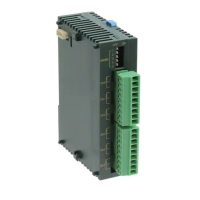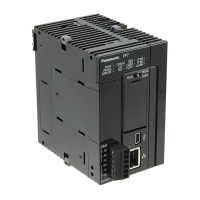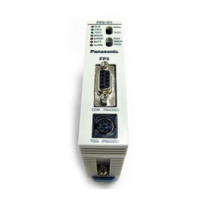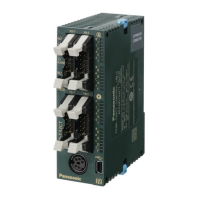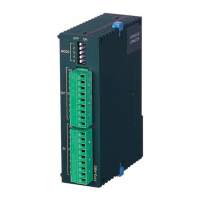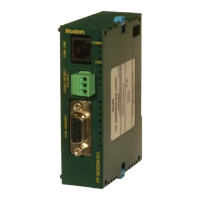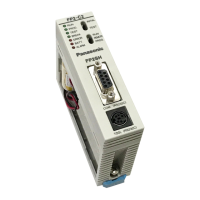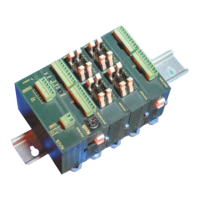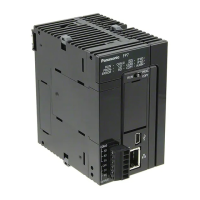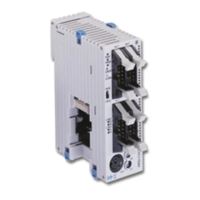FP3 MEWNET-TR
Chapter3-2. Page.46
42
5) Wiring output
x The 24-V positive (+) terminal is connected to each positive (+) terminal, and the 24-V negative (-) terminal is
connected to each negative (-) terminal, as shown in the internal circuit diagram on page 38.
x When the current load is large, provide an external power supply.
x When the current load is small, such as that for LEDs, use the 24 V DC supplied by the internal circuit.
Wiring example:
+
24V
-
24V
0123
+
RS
485
+
-
+
-
F.G.
-
RS
485
4567
+
-
+
-
8-output type FP I/O transmitter unit
External
power supply
(See note.)
Load
LED
When the load current is large When the load current is small
Notes:
x
Keep the external power supplied to the load within 20.4 V to 26.4 V DC.
x
When the internal drive current is under 0.5 A, the output terminal can be connected to up to 16 points.
(16 output points can be turned ON at the same time.)
x
The negative(-) terminal of the external power supply is connected to the nearest negative(-) of the output
terminals.
x
Limit the total capacity of current used from the internal power supply to less than 1 A.
Formula:
[Internal drive current 5 mA]
×
[Number of ON points] + [Current load]
J
Notes on output wiring
<Wiring an inductive load>
x With an inductive load, provide a protective circuit in parallel with the load.
<Wiring a load with a large rush current (capacitive load)>
x When connecting a load with a large rush current, use a protective circuit to reduce its effect.
+
24V
-
24V
0123
+
RS
485
+
-
+
-
F.G.
-
RS
485
4567
+
-
+
-
16-output type FP I/O transmitter unit
89AB
+
-
+
-
CDEF
+
-
+
-
Diode
Inductive load
Inductance Resistor
Load with
large rush current
3-2. Wiring

